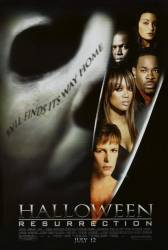
Question: Why did Michael hand the knife to the patient with the clown mask after killing Laurie at the beginning of the movie? Was he trying to frame him for the murders at the institution, or was there a deeper meaning I might have missed?
Chosen answer: Michael handed the knife to the guy in the clown mask so it looked like the guy in the clown mask killed Laurie, not Michael.
He actually handed the knife to the guy as a memento, not to frame him.
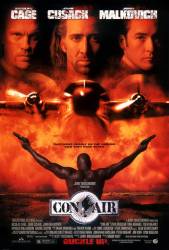
Question: What is the actual likelihood that a decorated serviceman, with no prior criminal record (we know this because if Poe had any priors he wouldn't have been in the Army) would actually get prison time for killing two men who attacked himself and his girlfriend? Seeing as there were witnesses (said girlfriend and bartender) I find it hard to believe he would have gotten more than an extended period of probation. A prison term, even a year or two, seems severely harsh considering the circumstances.
Chosen answer: Zero. As you said, he was attacked and there are witnesses that he tried to avoid the fight and the killings were in self-defense. It is an extremely weak plot hammer to get Poe onto a plane full of criminals. It's foolish as well. The writers could have had Poe framed for a crime then exonerated and put in the same situation much more believably.
It's in Alabama. People are put in prison here for much less.
First, Poe is a federal prisoner, not subject to State laws or legal procedures. Secondly, he is not in Alabama. During a conversation with Billy Bedlam we hear that he is incarcerated in the "Q" - prison slang for San Quentin in California. It makes you wonder why a Federal prisoner is in a State prison, but that's another type of mistake.
He was incarcerated in San Quentin, but the incident in which he was arrested happened in Alabama.
Would it really be considered self-defense, though? After he beat the guys to the ground he could have just stopped and walked away, but he didn't. He kept beating them until they died.
He is defending his wife against two armed assailants, and use of lethal force is allowable. No DA in the United States would even think about pressing charges, knowing full well a grand jury would throw them out in a second.
This is not at all how it happened. Two of the assailants survived; we see them get up and run away. Cameron killed only one person, unintentionally, accidentally killing him with a lethal blow under the chin.
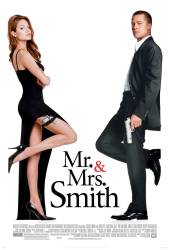
Question: How does Mrs. Smith get to know that her husband is the shooter?
Answer: She notices that he shakes his right leg twice after peeing, just like her husband.
Answer: It comes down to a deleted scene. And I remember it as clear as day from when I saw it at the cinemas. There is a scene where Jane is brushing her teeth at the basin. John walks into the large bathroom and begins to take a leak. As John finishes up, Jane looks over her shoulder at him, just in time to see him lift one leg and give it a couple of sharp shakes. Later in the movie, after the ailed assignment/shootout in the desert, Jane is watching the footage of the other assassin doing the very same memorable action. Right as she is in the middle of replaying it back a couple of times, John turns up at her building, and one of her agents who has answered the intercom says, "Jane, it's your husband." And that is when the penny drops! For some bizarre, unknown reason, they removed that very important key bathroom scene from every TV and DVD release, leaving people who did not see the theatrical release at the box office asking the question of how Jane realized it was her husband.
Answer: From the way he stands and moves, height, weight and general mannerisms.
Answer: They worked for different agencies and were unaware that they had been given the same target (Diaz?) to kill in the desert. Mrs Smith initially thought that Mr Smith was a civilian that just happened to interfere with her assignment. She was given 48 hours to identify and eliminate (kill) the "witness." While reviewing the videotape of the scene, all Mrs Smith could see was the back side of the "civilian." While still looking at him, a secretary or similar employee yelled from outside the room that Mrs Smith's husband was on the phone and was back from his trip to Atlanta. By the secretary saying, "It's your husband" during the time Mrs Smith was looking at his back side on the tape, plus the information that he was back from Atlanta, it became obvious to her... and she wondered how she could have been so stupid to not know before this time.

Question: All of the residents of Eastern United States were informed by the president when the smaller of the two meteors were to strike in the Atlantic Ocean, yet, even with ample time to evacuate away from the area of impact, why did it appear the residents all chose to leave on the final day? (Clogged highways and chaos).
Answer: They were trying to send missiles, which failed. The president spoke and that's when people started to leave.
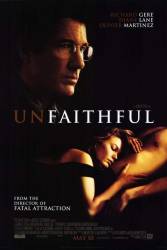
Question: The final scene in the car at the red light in front of the Police station. They are discussing escaping to Mexico for the rest of their lives. They hold each other. The car doesn't move. Do they give themselves up to the police? Is that what the writer is implying?
Answer: Although Connie wanted them to go to Mexico and assume new identities, it is implied that Edward, who initially goes along with that idea, will likely turn himself into the police. However, there's no definitive ending given, so the audience is left to interpret the outcome.
An alternative ending was shot in which Edward says goodbye to Connie in the car and walks into the police station. The director discusses this on the commentary track. The alternate ending is on the DVD.
Answer: Connie wants to say she is guilty and asks her husband to forgive her.
Answer: I think that they had already decided that Edward would turn himself in after the school event. That's why the were so sad when they danced and why they engaged in an escape fantasy conversation at the red light. They knew that the police would soon figure it out and it was only a matter of time before Edward would be arrested. Rather than live in fear, they decided that it would be better for Edward to turn himself in. That's my answer but I have two other questions that I can not answer. 1. WHY did she do it? 2. How long did the affair last? I can't figure out the season but m y guess is between fall and the end of November but I can't be sure because the seasons don't seem to be correct. Is it sunny/warm enough to plant a garden in November in NY? I don't think so.
"Why did she do it?" I think that is the question she asked herself once she realised that she had made a terrible choice. Initially, it made her feel alive and young and excited. She had everything, but she began to feel invisible. Ultimately, her son will suffer the impact of her choice, and she will never have peace again.

Question: When they notice there's a gap in the freeway they keep to that route. However, there were other routes available. Why not take them?
Answer: If they had, there might have been the possibility that to get to these routes they would have to go down a different road and depending on which route they take they might have to slow down to make the turn which would likely cause the bus to drop below 50 mph. Better to just keep going straight and keep the bus going. There's also the possibility that had they taken a different route, they would have to deal with a lot of traffic especially if there was traffic stopped at a red light. By using the highway, there'd be no traffic lights and less traffic to deal with.
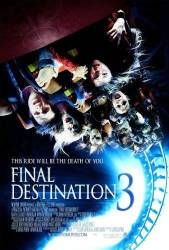
Question: I saw the answer to the whole Frankie death scene, but there's still something I don't get. If Wendy and Kevin had stayed in his truck, wouldn't they have died, and messed up Death's list?
Chosen answer: They would've died, but Death "knew" they wouldn't have stayed in the car. If they had stayed, Death would change his death.
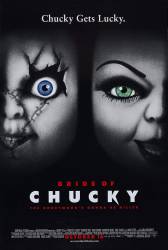
Question: It was discovered that Chucky was able to transfer his soul into Andy's Good Guy in the first movie by not only saying a chant but also using a magic amulet. So why, in the other three movies, when he is starting the chant does he not need the amulet to transfer his soul out of the doll into someone else, but in this movie, he needs to use it if he wants to return to his own body?
Answer: There's two possible explanations. First, and the most likely, is that this is simply what's referred to as a "retcon." (Short for "Retroactive Continuity") A term to describe new information/rules/backstory/etc. that are introduced in order to alter the path of a story, or impose new ideas into a narrative. In this case, the series creator and writer Don Mancini needed a reason for the characters to go on a road-trip, hence he created this new idea for an amulet that Chucky need to obtain. And basically, Mancini himself has admitted that he will often change the rules for the series as needed from film to film based on the story he wants to tell, which makes this the more plausible explanation. The second possible explanation is that you could argue that the amulet will allow Chucky to transfer his soul regardless of how long he's been in the doll's body, surpassing the time limit imposed in previous films. But in all seriousness, the former is the more likely explanation. They just needed a new story-element to justify the road-trip aspect of the story.
Both answers work for me. Thank you.

Question: When Robocop is about to arrest Jones, he suddenly feels his system malfunctioning. Jones then explains that Directive 4 is used to shut him down if he attempts to arrest a senior officer of OCP. Why did Jones put this directive into Robocop? At the time nobody knew he was working with Boddicker.
Answer: Because he knew he was doing illegal activities. Robocop was said to be highly efficient at his job and Jones did not want to risk him out on the streets without the insurance of shutting him down if Robo came after him.
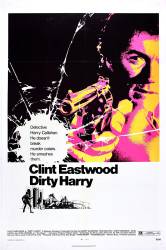
Question: Is Callahan holding the binoculars upside down when he is peering down on the apartments looking for Scorpio? He is on the rooftop with the Jesus Saves Sign. They look upside down to me. (00:38:39)
Answer: Yes the binoculars are upside down.
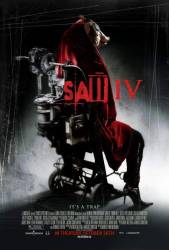
Question: A tape recorded by John directed toward agent Perez states that her partner would soon take the life of an innocent man. How did John know that agent Strahm would kill Jeff? For all he knows, Strahm could have followed Rigg through the factory rather than Jeff. The "if you're good at anticipating the human mind, it leaves nothing to chance" excuse doesn't work here. The only reason Strahm followed Jeff was because he heard Jeff hit a ceiling light with a crowbar.
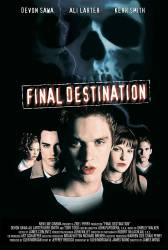
Question: On the back of the PAL DVD there is a picture of Alex holding back Clear from a car during the day. It looks to be at the place where Terry was killed. Does anyone know if this is a deleted scene not on the DVD? Also, on the commentary the makers of the film said that they shot the bus hit from inside the bus, as well as from the side. Does anyone know where these scenes are now?
Answer: The scene where Terry was killed was most likely shot during the day. It is quite common for film makers to film a scene during the day to get the right lighting effects and then later CGI the night sky and the proper shadowing. This is most effective when you have an area that would otherwise be too dark or have environment that wont allow for the proper lighting for a night shoot. As for the bus, your guess is as good as mine.
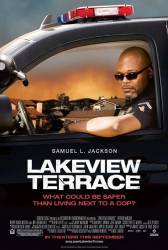
Question: (Spoiler warning) I didn't really understand why the wildfire was put into the story. I know that fires happen in California often and that the scene at the end of the movie looks creepy with all of the smoke and fires in the background, but was there supposed to be any other special meaning or symbolism?
Answer: As far as symbolism, from a film student's perspective (mine), it's like destruction or division, two common themes in the film. The two characters are split in values and the fire is raging between them. As the fire gets closer to the houses, it increases in intensity, as does the fighting between neighbors. I think in this film, fire was used not only as a plot device, but a metaphor for the story as well.

Question: I have three questions regarding the end scene. 1. How come Jean can't crush Wolverine's body? I ask this because we can see her easily kill all people who walk too close to her. 2. Why didn't Wolverine inject Jean with the cure instead of killing her? 3. What would happen if Jean got injected with the cure?
Chosen answer: 1) Apparently the combination of Logan's unbreakable skeleton and healing factor was enough to keep Jean from shredding him - it's possible to see his body getting damaged and repairing itself in a few shots. 2) Because, while he's capable of getting close to her mostly intact, the same isn't really true of anything he might be wearing or holding, so any cure syringe he carried with him would be destroyed. 3) Who knows? Given her extreme power level, the cure might or might not have worked, and, considering the final shot of the movie, which suggests that the cure isn't permanent anyway, her powers would likely return before long.
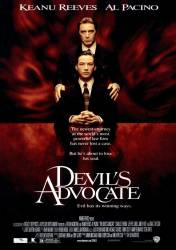
Question: During jury selection, Kevin decides to have one of the jury dismissed, I believe, because of the shoes the jury member wore. What exactly do the guy's shoes have to do with anything?
Answer: The shoes showed him this man polishes them every day, also his clothes are custom made. That all means the look he has of a black thug is deceiving, instead he's a cautious, proud person they can't use in the jury. Just to add, Kevin knows all this because the devil (his father, spoiler alert) is giving him the talent to do it, not a logical explanation can be given why he dismisses these people.
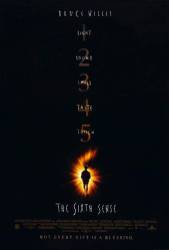
Question: Through most of the film Malcolm is dead. All the other ghosts still have scars from how they died but why doesn't Malcolm have his mark which should be a bullet wound?
Answer: Because as Cole tells us in the middle of the movie, "They only see what they want to see." The movie shows us Malcolm as he perceives himself. He can't actually put on an overcoat, or change clothes. He sees what he expects to see. He goes outside in the cold to visit Cole, so he sees himself wearing an overcoat. He doesn't know he is dead - he doesn't see his wound. To preserve this misdirection throughout the movie, we are shown Malcolm as he sees himself.
Actually, we do see Malcolm and Cole sees him. The entry wound in his abdomen is tiny, and the large, obvious exit wound is on Malcolm's back, which we never see.

Question: What did the term, "tying your shoe" mean?
Chosen answer: It means you need to avoid getting caught in the crossfire. Originally, terms like "tying your shoe" or "pulling your socks up" meant ducking to avoid flying bullets. In a more generic sense though, it needn't be about gun violence per se. Just that you don't want to be on the receiving end of violence meant for someone else. In the movie, this was a way of telling Edward that if he could not defuse the situation, then others would be forced to harm the professor. Here, they weren't actually going to put Edward in harm's way. But if he failed to change the professor, then violence against the professor was forthcoming.
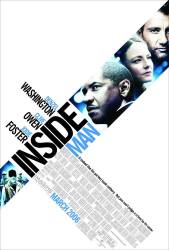
Question: After the robbery and once the dust settled (business was back-to-normal at the bank, etc.) why did the bank president not immediately go to open the safety deposit box and see what happened to its contents? He knew it was the target of the robbery. Reason would dictate that one of the first things he would have done would be to open the box and see what was there... Not leave it to the NYPD to open it and discover a mostly empty box except for the big ring, chewing gum and note.
Answer: The aforementioned answer fails to keep in mind he is the owner of the bank and could've have done this hours before the bank was opened and or hours after the bank was opened. Dalton spent 3 days behind the wall. Mr Case had a special fixer, and she had the mayor in her pocket. It is a reasonable assumption that a billionaire like Aruthur Case would be able to have the contents of his safety deposit box removed with little to no problem. One way is "yes Mr. Mayor I will be giving you a blank check for your reelection campaign." The issue is this was a major plot hole that almost ruined a otherwise great and well thought out movie.
Answer: Arthur Case did not want anyone to know about the safe deposit box or what was in it. In fact, the box's number had been left off the bank records. The police did not immediately know if anything had been stolen during the robbery. Case going to the bank to check on the box, would only have drawn attention to it. The contents, the diamonds, were a link to Case's criminal Nazi past that he wanted kept hidden. It was only by chance that Detective Frazier discovered the box and the clues that had been left inside it by Dalton Russell.
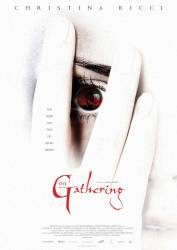
Question: Why did Argyle want to kill Michael? I can understand wanting to kill those who harmed him but Michael was an innocent boy.
Answer: She said in the movie, "He must see himself as a child in Michael. He wants to get rid of him to erase his past."
Answer: While Argyle shows a strange affinity for Michael, his primary goal is still revenge on the entire town. Innocent or not, Michael is connected to those who tortured him.
How could Michael have anything to do with those men that he killed? He's just a kid.
How is he connected?
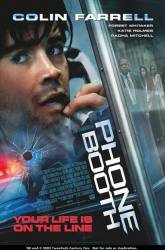
Answer: Or maybe he's thinking that his mission to kill Laurie is done. He's been trying to kill her for a long time and succeeded. No need to continue, but when those kids invaded his house, the killing began again. No one goes into his house, but him.